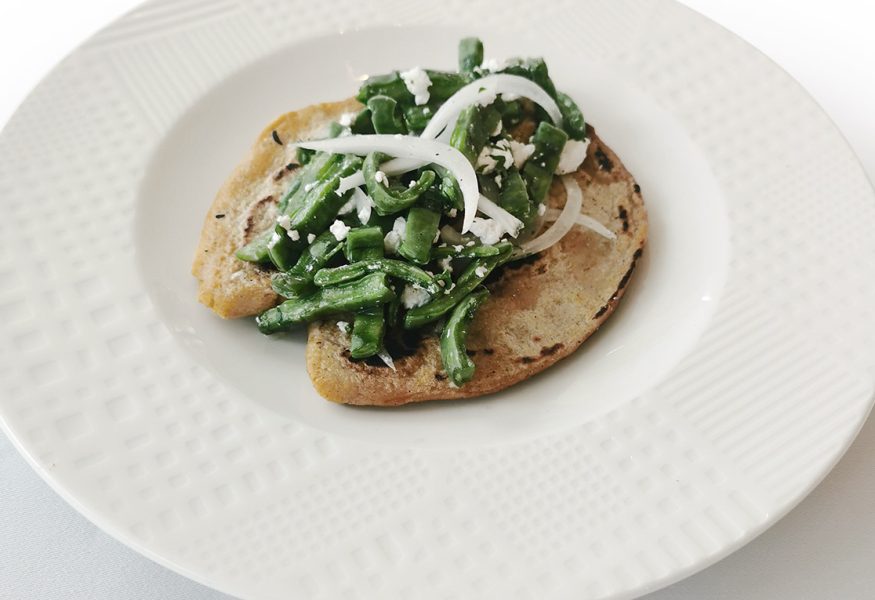
The name Tlacoyo comes from the Aztec Nahuatl language word “nacatlaoyo,” which is a stuffed hulled corn tortilla. Tlacoyos are prepared from nixtamalized corn and have an oval shape. In Toluca, Mexico State, they are usually stuffed with fava beans. This dish with pre-Hispanic origins is typical of central Mexico and widespread among peasant populations.
Ingredients for 4 portions
- Broad beans 100 g
- Water 250 g
- Garlic 5 g
- Cotijia or feta cheese 60 g
- Halls q.b.
- Cactus shovels 800 g
- Coariandolo 60 g
- Onion 50 g
- Corn dough 120 g
- Fresh cheese 100 g
Preparation
Cook fava beans in a pot of salted water for 30 minutes until tender.
Mash the fava beans with thegarlic, salt, and Cotija cheese and set aside.
Cut the cactus blades into strips, sprinkle them with salt, and remove excess salt with water.
Finely chop the cilantro and garlic. Mix them in a bowl, add salt, cactus paddles and cream cheese.
Process the corn dough with the salt and water.
Form balls of dough, flatten them and stuff them with fava beans. Then prepare the tlacoyos by giving them their characteristic oval shape.
Cook the tlacoyos in a frying pan.
Serve them accompanied by a salad of cactus shovels.
To limit our impact on the environment, we advise you to remain within 1 kg CO2-equivalent per meal, including all the courses you eat. Bear in mind that plant-based dishes are more likely to have a low environmental impact.
Even though some of our suggestions exceed the recommended 1 kg CO2-equivalent per meal, that doesn't mean you should never make them; it's the overall balance that counts. Regularly eating a healthy and eco-friendly diet in the long term offsets even the dishes with the most impact, as long as you don't make them too often.


